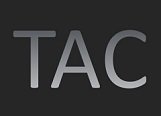COLD ROLLED STEEL COST
There are more considerations in milling operations than just material cost. When punching steel, tool wear, shop cleanliness and human factors all come into play.
A factory that makes steel shelving for the home products retail industry always ordered their rolled steel pickled and oiled to reduce tool wear and metal dust in the factory. But the cost was higher and competitors were buying 'dry' rolled steel which was cheaper. The workers insisted the total cost would be higher due to more frequent tool wear and machine and shop maintenance. So we set up an experiment to see.
We would run an equal number of runs of pickled and oiled steel and plain rolled steel. Before and after the runs we would measure the punch tools. At the end, we found that the tools wore out 62 times faster with the dry steel. In addition, the shop and presses would need nightly cleaning.
Despite those factors, the cost difference based on a years consumption of steel would be vastly in favor of the cheaper steel. A further factor that is harder to measure is that the workers did not want to work with the dirtier process and believed it would negatively affect their work environment and health.
In the end it was a management decision as to how to keep the factory open.



